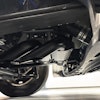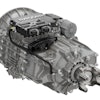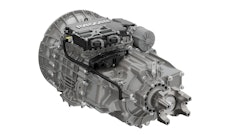
Class 8 truck orders in North America rose once again in August 2021. Orders for Classes 5-7 were up, as well during the month.
Per research firm FTR, preliminary North American Class 8 orders rose 51% from July to a total of 39,400 units. This was a 91% increase on a year-over-year basis. According to FTR, orders currently stand at 456,000 units for the past 12 months.
ACT Research reports Class 8 orders in August reaching 36,900 units; Classes 5-7 orders rose to 31,900 units. Both segments reached a 5-month high reading.
Complete August data from both research firms will be available later in the month.
FTR says in its press release announcing its August truck order figures that the increase was due in part to OEMs opening their order books for 2022. It states that OEMs are cautious though about fully booking all 2022 orders because of price negotiations with many fleet customers. Continued supply chain issues are also making it difficult for manufacturers to schedule production in the first quarter.
Don Ake, Vice President of Commercial Vehicles for FTR, commented in the firm's press release, “Ordering has commenced for 2022 deliveries, but at a much more measured pace than expected. Fleets have wanted to place their 2022 orders for months. They are in desperate need of trucks presently and with the freight market being so robust, anticipate that build slots will again be scarce next year. OEMs, on the other hand, have been reluctant to open their order boards due to high commodity prices and supply chain uncertainties.
“Demand for Class 8 trucks will be huge in 2022 due to growing freight markets and pent-up demand left over from 2021. Orders will be substantial from August until the end of the year. However, there could be wide fluctuations from month to month because the OEMs are being deliberate in how they manage and slot the orders.
“The supply chain is still impacting the entire industry and Class 8 orders are no exception. It’s difficult to know how many trucks you can produce in the first quarter when many components, and especially semiconductors, are in short supply. Once commodity costs stabilize and the supply chain gets into balance, orders will soar, and build rates will jump.”
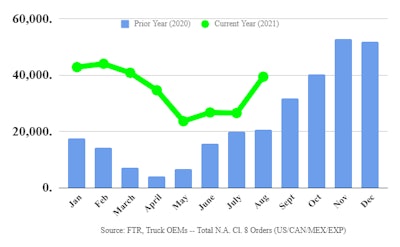 FTR
FTR
“Demand for commercial vehicles was alive and well in August, as the Classes 5-7 market continued to build on record-setting volumes. And after a period of moderation related to limited 2022 build slot access, Class 8 orders began their climb into the end of 2021,” said Kenny Vieth, ACT’s President and Senior Analyst, in the research firm's press release announcing its August order figures. He added, “While the supports for new vehicle demand remain in unprecedented territory, the industry’s ability to convert that demand into vehicles remains constrained by numerous supply-side issues that begin with, but are not limited to, semi-conductors. As such, production challenges are likely to weigh on orders, even as backlogs continue to rise.
“Despite the orderboard being essentially sold-out into Q2 of next year, Class 8 orders rallied to a 5-month high, and a buoyant consumer economy continues to drive medium-duty vehicle demand, resulting in a 5-month high for that segment and marking the fifth best order month for medium-duty vehicles in ACT’s nearly 40 years of monthly recordkeeping,” he said.
Supply constraints lead to cut in production forecasts
ACT Research has also released the latest edition of its North American Commercial Vehicle OUTLOOK which indicates a cut in commercial vehicle production forecasts for 2021 and 2022. This is due in large part to supply chain constraints, which are expected to continue well into 2022.
“In the current period of [near] record demand for commercial vehicles of all stripes, the story the past few months has shifted from one of abundance to one of constraint,” said ACT's Vieth. “While we say ‘semiconductors’ as a generic reference to the supply-chain’s shortcomings, in actuality there are scores of parts that continue to be impacted by the pandemic, by the lingering impact of steel tariffs, and even by the February storm that incapacitated Texas and shutdown swathes of the U.S. plastics industry for two-plus quarters.
“Like the supply chains themselves, the issues are not only domestic and not only commercial vehicle. And semiconductors might be masking other component issues, but they are at the heart of the supply chain’s woes.”
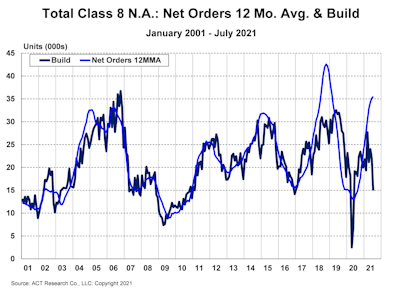 ACT Research
ACT Research
He concluded, “Closer to home, we illustrate the current disconnect between demand and supply with a Class 8 chart overlaying actual production on the 12-month order average. As the 20 years of data highlight, and not surprisingly, production is highly correlated to the order trend. The order average, breaking through 35k/mo. in July, is currently pointing to monthly build volumes that should be approaching 30,000 units/mo. Instead, production through July has failed to crack the March build rate, and July build totaled just 14,920 units, or 710 units per day, as the OEMs resorted to down days and weeks.”
“As illustrated in the graph, industry volume forecasting is typically a demand-side exercise. For Class 8, we cut 2021 build expectations for a second consecutive month, but the story is materially different in the medium-duty sector. We attribute the smoother outcomes to-date in Classes 5-7 to the fact that the large passenger vehicle-based market participants are able to pull chips from smaller, lower margin pick-up trucks and put those chips into medium-duty vehicles. Of course, the opposite is also happening amongst the Classes 5-8 producing CV OEMs, with the medium-duty market shedding chips into Class 8,” said Vieth in ACT's press release announcing its cut in forecasts, regarding the impact of the supply chain disruptions on future expectations.
*Information based on press releases provided by FTR and ACT Research.


